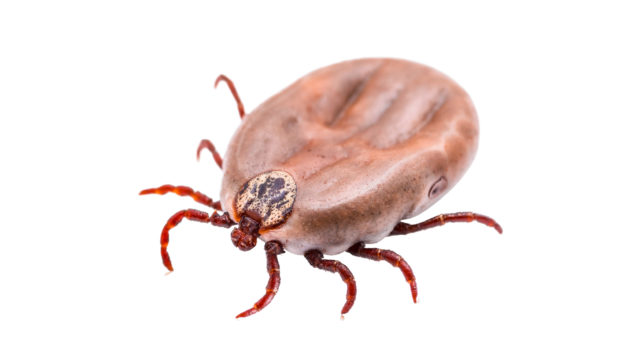
Experts are warning of an explosion in the number of ticks this summer and with them an increase in the number of cases of crippling Lyme Disease.
Last month’s mild weather – which saw the warmest February day on record – means the tick breeding season got off to an early start.
The number of diagnosed cases of Lyme Disease – a debilitating condition which can cause arthritis and even paralysis – rose from less than 30 reported cases in 1996 to 220 in 2015.
Stella Huyshe-Shires, chairman of Lyme Disease Action, said the warmer weather will mean more ticks.
It also means there will be more rodents, which carry Lyme Disease, and which ticks feed off. So Scotland’s ticks are more likely to be carrying the disease.
She said: “Ticks are generally active over 7°C. It has been milder and they are likely to be out and about earlier.
“The other thing about relatively mild winters is that more mice survive and it is rodents which are the main carriers of the Lyme Disease bacteria. You have more ticks, they feed on more mice and therefore are more like to pick Lyme Disease.
“Awareness of ticks is the key to prevention of tick-borne disease. If you know what a tick looks like and how to remove it then you need not worry about enjoying the countryside.”
Harriet Auty, an epidemiologist at Scotland’s Rural College, warned this year could see large numbers of ticks.
“The warm weather in February definitely caused early tick activity and there were people reporting ticks on themselves and their pets.”
Since then colder weather has caused less tick activity, but Dr Auty warned: “There are ticks out there but they are waiting for warm weather … so we are definitely building towards a spring peak.”
Lyme Disease can cause paralysis but even a mild form can cause severe tiredness and aching muscles.
How to reduce the risk of being bitten
Cover your skin while walking outdoors and tuck your trousers into your socks.
Use insect repellent on your clothes and skin, products containing DEET are best.
Stick to paths whenever possible. Wear light-coloured clothing so ticks are easier to spot and brush off.
To remove a tick safely…
Use fine-tipped tweezers or a tick-removal tool – you can buy these from some pharmacies, vets and pet shops.
Grasp the tick as close to the skin as possible.
Slowly pull upwards, taking care not to squeeze or crush the tick.
Dispose of it.
Clean the bite with antiseptic or soap and water.

Enjoy the convenience of having The Sunday Post delivered as a digital ePaper straight to your smartphone, tablet or computer.
Subscribe for only £5.49 a month and enjoy all the benefits of the printed paper as a digital replica.
Subscribe